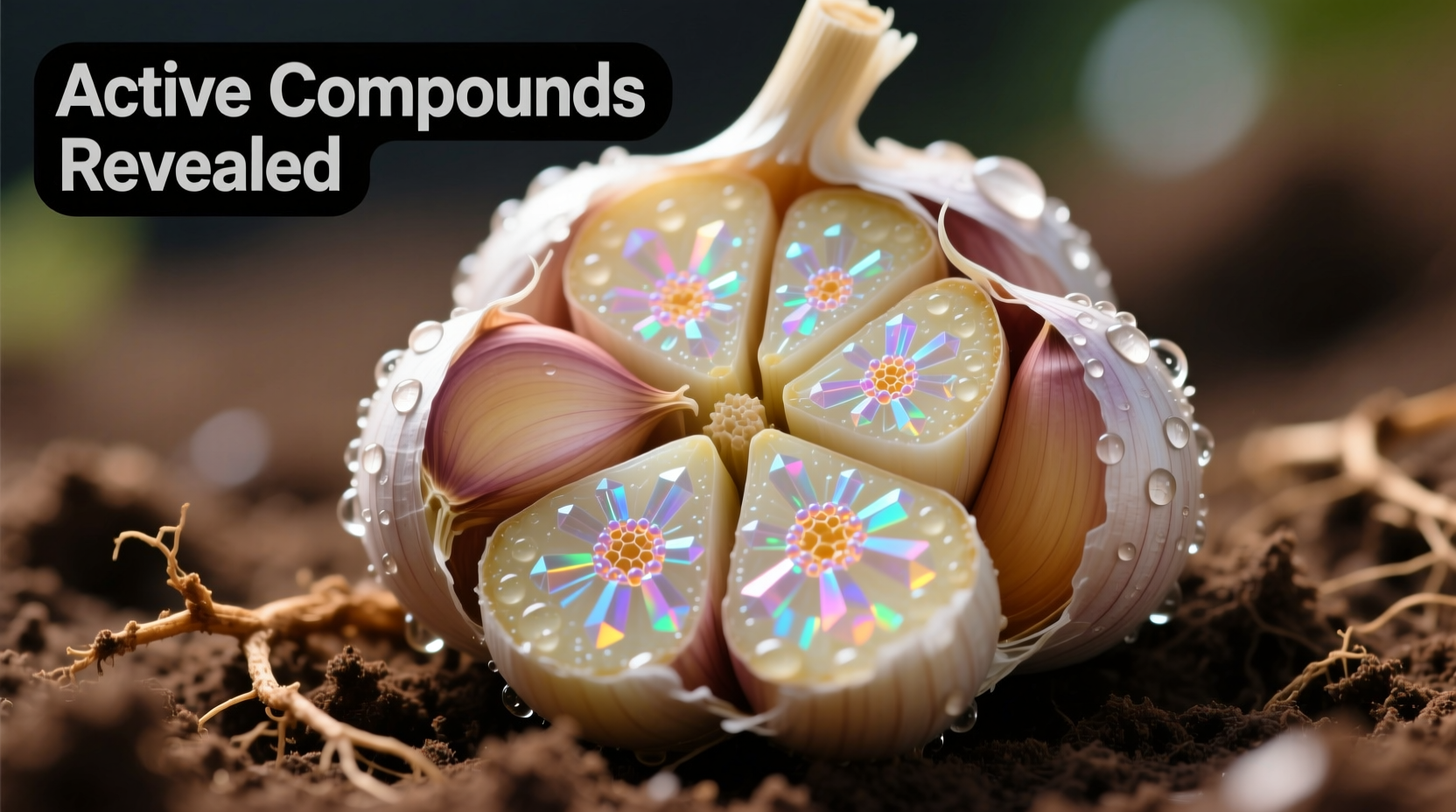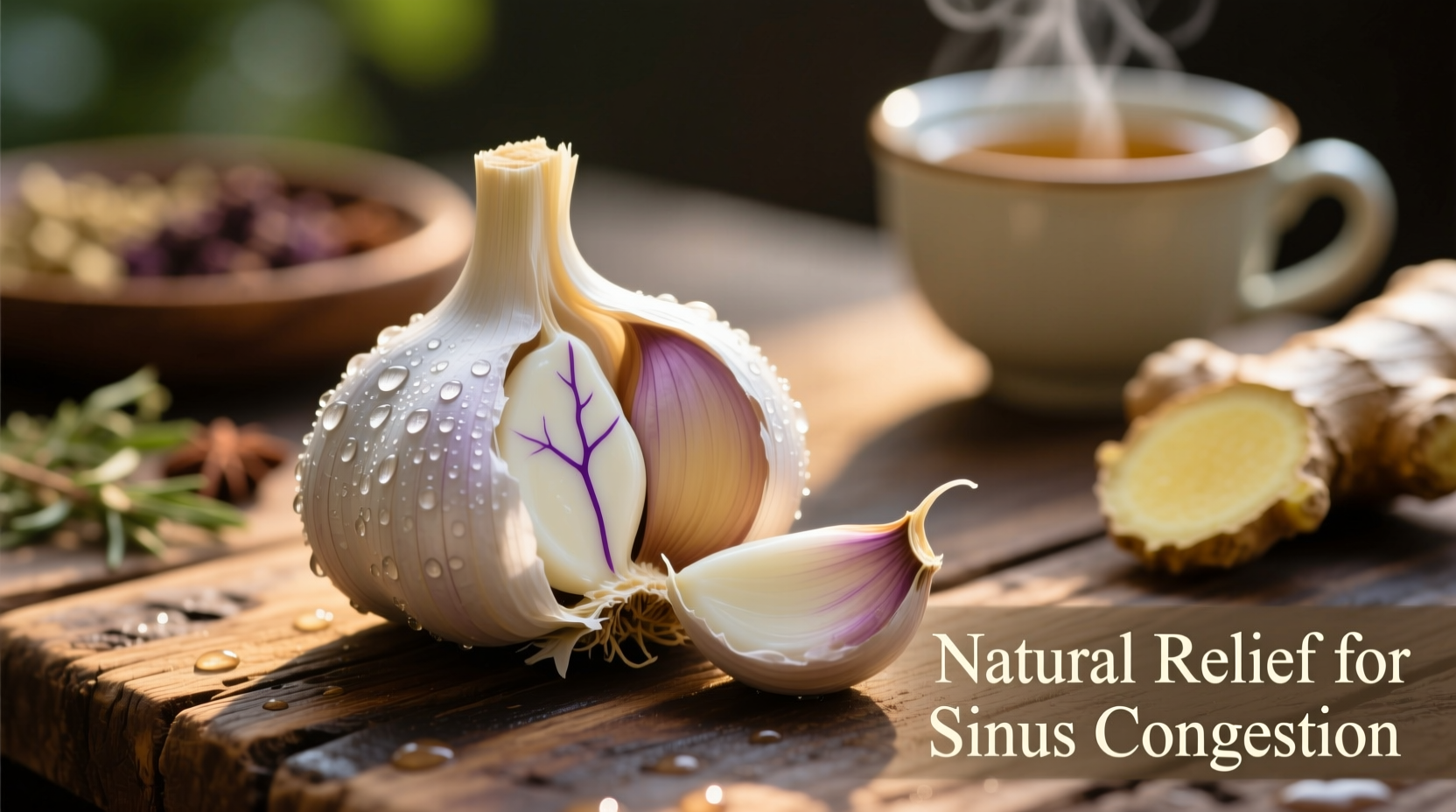Understanding Sinus Infections and Natural Remedies
Sinus infections affect approximately 31 million Americans annually, with most cases beginning as viral upper respiratory infections that sometimes develop into bacterial complications. When conventional treatments aren't immediately accessible or preferred, many seek natural supportive approaches. Garlic has been used in traditional medicine systems worldwide for centuries to address respiratory ailments, but understanding its actual effectiveness requires examining both historical usage and modern scientific evidence.
Garlic's Active Compounds and Their Potential Benefits
When garlic cloves are crushed or chopped, the enzyme alliinase converts alliin into allicin—the compound responsible for garlic's distinctive smell and many of its biological effects. Allicin demonstrates:
- Antimicrobial activity against bacteria including Streptococcus and Staphylococcus species
- Natural anti-inflammatory properties that may reduce sinus membrane swelling
- Immune-modulating effects that could support the body's defense mechanisms
A 2016 study published in Avicenna Journal of Phytomedicine confirmed allicin's effectiveness against multiple drug-resistant bacterial strains in laboratory conditions. However, translating these laboratory findings to effective sinus infection treatment requires understanding practical application methods and limitations.

Evidence Timeline: From Traditional Use to Modern Research
| Time Period | Usage/Application | Scientific Validation |
|---|---|---|
| Ancient Egypt (1500 BCE) | Garlic included in workers' diets to prevent respiratory infections | Historical records only; no contemporary scientific analysis |
| Ancient Greece (400 BCE) | Hippocrates prescribed garlic for respiratory conditions | Early observational evidence; no controlled studies |
| World War II | Soviet soldiers used "Russian penicillin" (garlic) for wound infections | Anecdotal military records; limited documentation |
| 1980s-Present | Modern laboratory studies on allicin's antimicrobial properties | Multiple peer-reviewed studies confirming in vitro effectiveness |
| Current Research | Investigating garlic compounds for antibiotic alternatives | Ongoing clinical trials; limited human studies for sinus-specific applications |
Practical Application Methods for Sinus Relief
For those considering garlic as a supportive measure for sinus discomfort, these evidence-informed approaches may provide some relief:
Steam Inhalation Technique
Add 2-3 crushed garlic cloves to 2 cups of boiling water. Cover your head with a towel and inhale the steam for 5-10 minutes. The heat and moisture help open sinus passages while volatile garlic compounds may reach affected areas. Caution: Keep face at least 12 inches from water to avoid burns.
Dietary Incorporation
Consuming raw garlic provides the highest allicin content. Try these methods:
- Chop 1-2 cloves and let sit for 10 minutes before adding to honey or olive oil
- Swallow small pieces with water to minimize stomach irritation
- Include in warm broths or teas for easier consumption
Important Limitations and Safety Considerations
Garlic's potential benefits come with significant limitations that users must understand:
When Garlic Isn't Sufficient
According to the American Academy of Otolaryngology, bacterial sinus infections typically require prescription antibiotics when symptoms persist beyond 10 days or worsen after initial improvement. Garlic cannot replace appropriate medical treatment in these cases. The American Academy of Otolaryngology states: "Antibiotics are not always needed for sinusitis. However, if symptoms last longer than 10 days or worsen after initial improvement, antibiotics may be necessary."
Practical Constraints of Garlic Treatment
- Allicin instability: The active compound breaks down quickly when exposed to heat or air
- Dosage uncertainty: No standardized therapeutic dose exists for sinus infections
- Drug interactions: May enhance blood-thinning medications like warfarin
- Side effects: Heartburn, bad breath, and potential allergic reactions
Complementary Approaches for Sinus Relief
For comprehensive sinus support, consider combining garlic with other evidence-based approaches:
- Nasal irrigation: Use a neti pot with sterile saline solution (proven effective in multiple studies)
- Steam therapy: Plain steam inhalation without additives can reduce congestion
- Hydration: Drink plenty of fluids to thin mucus secretions
- Elevation: Sleep with head elevated to promote sinus drainage
When to Seek Medical Attention
Consult a healthcare provider if you experience:
- Symptoms lasting longer than 10 days without improvement
- Severe headache or facial pain
- High fever (over 102°F/39°C)
- Swelling around eyes or forehead
- Double vision or other vision changes
Frequently Asked Questions
Can garlic cure a sinus infection?
Garlic cannot cure bacterial sinus infections, though its antimicrobial properties may provide supportive relief for mild symptoms. The Centers for Disease Control and Prevention states that most sinus infections are viral and resolve without antibiotics, but bacterial infections typically require prescription treatment. Garlic should be considered a complementary approach, not a replacement for medical care when needed.
How much garlic should I take for sinus infection relief?
There's no established therapeutic dose of garlic specifically for sinus infections. Research suggests 600-1,200 mg of aged garlic extract daily may support immune function, but for acute symptoms, some practitioners recommend 1-2 raw cloves daily. Crush garlic and let it sit for 10 minutes before consumption to maximize allicin formation. Consult your healthcare provider before using garlic therapeutically, especially if taking blood thinners or other medications.
Is raw garlic more effective than cooked garlic for sinus infections?
Yes, raw garlic provides significantly more allicin—the active compound with antimicrobial properties. Cooking destroys the alliinase enzyme needed to form allicin, reducing effectiveness. A study in the Journal of Agricultural and Food Chemistry found that microwave heating completely inactivates garlic's medicinal properties, while baking preserves some benefits. For maximum potential benefit, consume raw garlic by crushing cloves and letting them sit for 10 minutes before eating.
How long does it take for garlic to help with sinus infection symptoms?
If garlic provides any symptomatic relief, you might notice effects within 24-48 hours for mild congestion. However, scientific evidence for garlic's effectiveness specifically for sinus infections is limited. A review in the journal Phytotherapy Research noted that while garlic shows promise for upper respiratory infections generally, most studies focus on cold prevention rather than treating active sinus infections. Do not delay medical treatment if symptoms persist beyond 10 days or worsen.
Can I use garlic with antibiotics for sinus infection?
Generally yes, but consult your healthcare provider first. Garlic may enhance the effects of certain antibiotics according to research in the Journal of Antimicrobial Chemotherapy, but it can also interact with blood-thinning medications. The National Center for Complementary and Integrative Health notes that while garlic is generally safe to consume with antibiotics, high therapeutic doses might affect how your body processes certain medications. Always inform your doctor about all supplements and natural remedies you're using during medical treatment.











 浙公网安备
33010002000092号
浙公网安备
33010002000092号 浙B2-20120091-4
浙B2-20120091-4